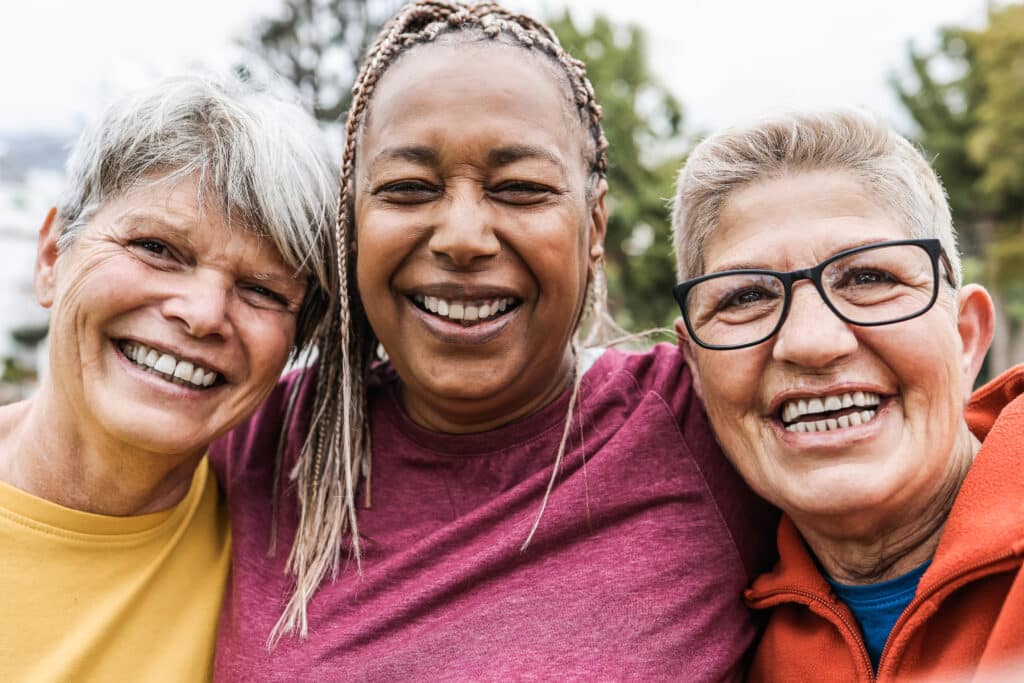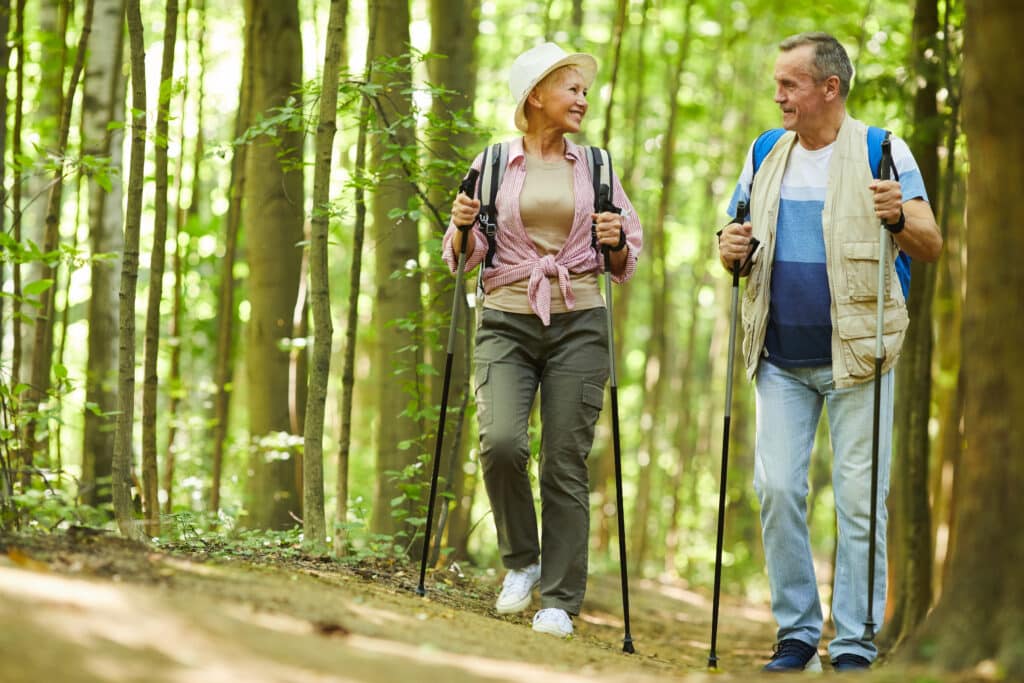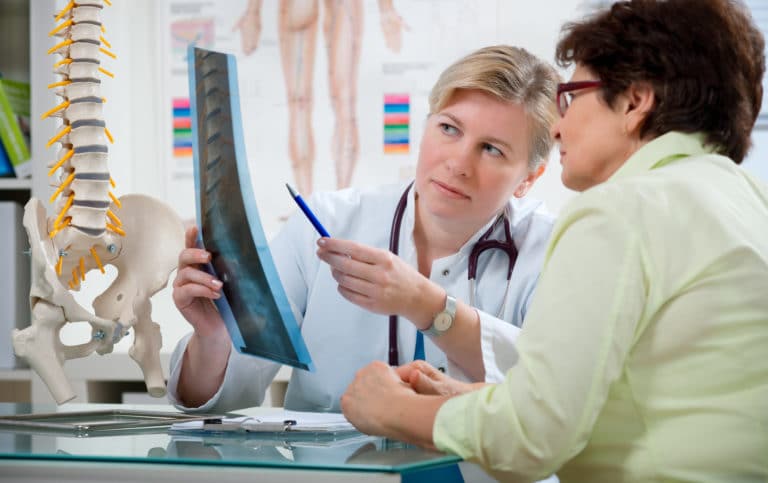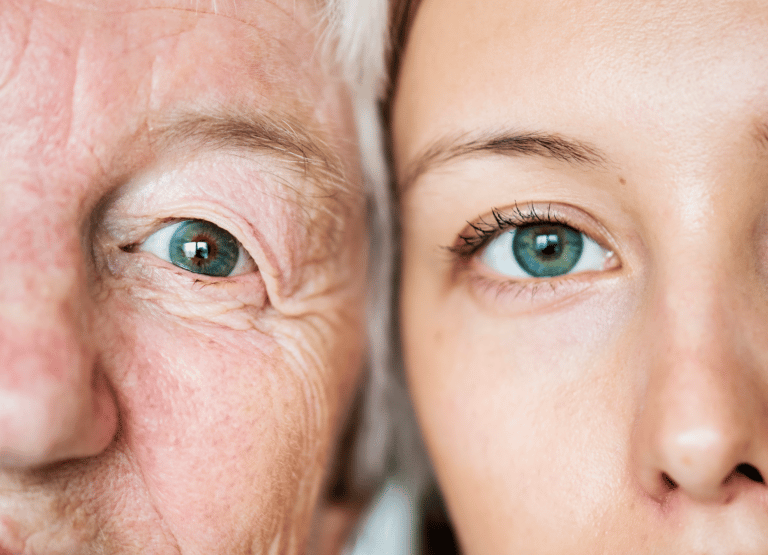Bone density is a simple way of measuring how strong our bones are. This becomes increasingly important as we age, particularly for women.
Bone density is measured by the amount of calcium and other minerals in our bones. When these minerals are in short supply, conditions like osteopenia and osteoporosis can develop, leading to bones that break more easily.
Several factors contribute to the decrease in bone density. Changes in hormone levels, especially during and after menopause, play a significant role. Lifestyle choices such as poor diet, lack of exercise, smoking, and heavy drinking can also weaken bones. Certain medications and health conditions might contribute to this issue. Understanding these factors is crucial for taking better care of our bones.
Good bone health is essential for maintaining an active and independent life as we age. This article will explore the basics of understanding bone density, especially for women. Improving bone health can be as simple as getting tested, eating healthier, getting more physical activity, and making smarter lifestyle choices.
Now, let’s delve deeper into the causes of bone density loss, why women are at higher risk, and the best ways to keep our bones healthy and strong.
The Basics of Bone Density
Bone density measures how much calcium and other minerals are present in your bones, which determines how strong and resistant to fractures your bones are. For several reasons, low bone density —also known as osteopenia— tends to be more common in older women.
If bone density continues to decline, osteopenia can progress to osteoporosis. This condition describes weak and brittle bones with a high fracture risk. Depending on where bone fractures occur, they can cause pain, disability, and loss of independence.1
According to the National Osteoporosis Foundation, about 10 million Americans have osteoporosis, and another 44 million have low bone density.
In general, women are much more likely than men to develop osteoporosis. One in two women over age 50 will break a bone because of osteoporosis.2
In my experience, women with low bone density are more limited in their activities due to worry of bone fractures. Conversely, being sure that you have good bone density can significantly affect your overall confidence and ability to enjoy activities.
What Causes Bone Density Loss?

Your bones are constantly being broken down and rebuilt through a process called bone remodeling. Bone remodeling helps your bones adapt to stress, repair damage, and regulate calcium levels in your body.
However, as you age, bone remodeling may not occur as effectively as when you were younger. Bones may lose more minerals than they gain, resulting in lower bone density and weaker bones.
To some degree, this is a normal part of aging. Still, some factors can accelerate bone density loss.
Hormonal Changes
Hormones play a crucial role in regulating bone health. Estrogen, for example, protects your bones by inhibiting the activity of bone-reducing cells and promoting the activity of bone-building cells.
However, when women reach menopause, their estrogen levels drop significantly, leading to increased bone loss. Testosterone, which also supports bone health, declines with age in both men and women.
Nutritional Deficiencies
To maintain density, your bones need adequate calcium, vitamin D, protein, and other nutrients. Calcium is the main mineral that makes up your bones; vitamin D helps your body absorb it. Protein is essential for building and repairing bone tissue.
However, many older adults tend to lack these nutrients in sufficient quantities in their diet or supplements.
Other nutrients that support bone health include magnesium, zinc, vitamin K, and vitamin C.
Physical Inactivity
Your bones respond to physical stress by becoming more robust and denser. For this reason, exercise is one of the best ways to prevent or slow bone loss as you age.
However, many older adults do not get enough physical activity or don’t do the right types of exercise for their bones.
Weight-bearing exercises —including walking— and resistance exercises, such as lifting weights, can significantly increase muscle strength and bone mass.
Smoking and Alcohol
Smoking reduces blood flow to your bones, which affects their ability to heal and grow, lowers your estrogen levels, increases bone loss, and interferes with the absorption of calcium and vitamin D from your diet.
Alcohol affects your liver’s ability to produce vitamin D, which is needed for calcium absorption. It also increases the excretion of calcium and magnesium from your kidneys, which depletes your bone minerals.
Certain Medications
Some medications can have adverse effects on your bone health. These include commonly prescribed medicines like corticosteroids, anticonvulsants, proton pump inhibitors (PPIs), and some antidepressants.
In most cases, your doctor will carefully monitor your medications to ensure they are not negatively impacting your bone density.
Medical Conditions
Some medical conditions can also increase your risk of bone loss, including rheumatoid arthritis, inflammatory bowel disease (IBD), celiac disease, hyperthyroidism, hyperparathyroidism, and diabetes.
Bone loss often does not cause any symptoms until a fracture occurs. This presents a significant challenge for both patients and medical providers. It’s essential to be aware of the factors that can affect your bone health and take steps to prevent them as soon as possible.
Why Are Women More at Risk for Bone Density Loss?

One of the main reasons women are more likely to experience bone density loss is the role of estrogen in bone health. Estrogen is a hormone that regulates many functions in the female body, including bone remodeling.
When women reach menopause, their ovaries stop producing estrogen. This causes a decline in bone density, especially in the first few years after menopause, and women can lose up to 20% of their bone mass in the five to seven years following menopause. This is called postmenopausal osteoporosis, and it is the most common type of osteoporosis in women.3
Another reason why women are more prone to bone loss is that they tend to have lower peak bone mass than men. Peak bone mass is the highest amount of bone tissue you will possess in your lifetime. Most people reach PBM around their late twenties or early thirties.
The higher your peak bone mass, the more bone you have to lose as you age. Women generally have lower peak bone mass than men because they have smaller bones, less body weight, and less muscle mass.
Most of the women that I’ve worked with who have low bone density have already gone through menopause. However, many female patients live normal lives and can stay active with the proper education and care plan.
Although women are more vulnerable to bone loss than men, this doesn’t mean that men are immune to osteoporosis or fractures. Men can also lose bone density for the above reasons and should consider monitoring bone density an essential part of their long-term health.
Why Are Bone Density Scans Important?
A bone density scan is a simple and painless test that measures how much calcium and other minerals are in your bones. In its most basic form, a bone density scan is used to help detect low bone density to prevent or reduce the risk of bone fractures.
DEXA Scans
A bone density scan uses a special type of X-ray called dual-energy X-ray absorptiometry (DEXA).
A DEXA machine sends two beams of low-dose X-rays through your body, one with high energy and one with low energy. The difference in how much your bones absorb each beam reflects your bone mineral density (BMD). The higher your BMD, the stronger and denser your bones are.
The results of a DEXA scan usually focus on the bones that are most likely to fracture due to osteoporosis, such as your hips or wrists. The scan takes 10 to 15 minutes and involves less radiation exposure than other tests, including an X-ray.
Understanding DEXA Scan Scores
The results of your DEXA scan are reported as T-scores and Z-scores. A T-score compares your BMD to the average BMD of a healthy young adult of the same sex. A Z-score compares your BMD to the average BMD of people of the same age, sex, and ethnicity as you.
These scores help determine if you have average bone density, low bone density (osteopenia), or osteoporosis.
According to the World Health Organization (WHO), the criteria for diagnosing osteoporosis based on T-scores are4:
- Normal: T-score of -1.0 or higher
- Osteopenia: T-score between -1.0 and -2.5
- Osteoporosis: T-score of -2.5 or lower
Your Z-score can also indicate if you have low bone density for your age group, which may suggest an underlying cause other than aging.
Having worked with older adults who have T-scores indicating osteopenia and osteoporosis, I’ve learned that it can create several challenges with everyday life and overall confidence.
However, these scores can change with time, and my most successful patients have seen their DEXA results as an opportunity to improve their physical health and thrive into older age.
At What Age Should Women Get Tested for Bone Density?
A critical question that often arises in discussions about bone health is: at what age should women start getting bone density tests?
The answer isn’t one-size-fits-all, as various factors influence the ideal time for testing. However, understanding general guidelines can help you make informed decisions about your bone health.
For most women, bone density testing should start at 65. This recommendation comes from leading health organizations like the National Osteoporosis Foundation. The rationale behind this age benchmark is that, typically, women experience a more rapid decline in bone density post-menopause. As estrogen levels drop significantly after menopause, bones lose density more quickly, increasing the risk of osteoporosis and fractures.
However, there are circumstances where earlier testing may be warranted. Suppose you have risk factors such as a family history of osteoporosis, early menopause, a history of bone fractures, or certain medical conditions and medications that affect bone health.
In that case, your doctor may recommend getting tested sooner. For instance, women who undergo menopause before the age of 45 are at a higher risk for bone density loss and may benefit from earlier screening.
Age-Related Lifestyle Choices That Influence the Need for Testing
In addition to age and individual risk factors, lifestyle choices can significantly influence when you should start testing.
Suppose you have a history of smoking, excessive alcohol consumption, or a diet lacking in calcium and vitamin D. In that case, these factors can contribute to earlier bone density loss. Discussing an appropriate screening schedule with your healthcare provider is crucial.
Bone density tests can be a preventive tool for younger women, especially those with known risk factors. These tests can provide a baseline measurement of bone health, which is crucial in tracking changes over time and implementing early intervention strategies if needed.
Remember, bone density tests are not just a one-time procedure. They should be part of an ongoing health monitoring plan. Once you start getting tested, your doctor will advise on how frequently you should have follow-up scans based on your initial results and overall health status.
As a physical therapist, I’ve seen firsthand the benefits of early and regular bone density testing in helping women maintain their bone health and overall quality of life. It’s a proactive step that empowers you to take charge of your bone health and act before significant bone loss occurs.
How Can Bone Density Be Improved?

If you have low bone density or osteoporosis, it’s normal to want to improve your bone health. The good news is that there are many ways to prevent or slow down bone loss and even increase bone density. Here are some practical tips on how to improve your bone health.
Improve Your Diet for Bone Health
Your diet is vital in providing your bones with the nutrients they need to grow and repair. Some of the nutrients that are essential for bone health include calcium, vitamin D, and protein.
Other nutrients that support bone health include magnesium, zinc, vitamin K, vitamin C, omega-3 fatty acids, and antioxidants. You can get these nutrients from various foods, such as fruits, vegetables, whole grains, nuts, seeds, and oils.
To improve your bone health, eat a balanced diet that includes foods from many food groups, and avoid fast or fried foods as they tend to be lower in nutrient density.
Conversely, limit your intake of foods that can impact your physical health negatively, such as excessive salt, sugar, caffeine, and alcohol.
While many of the older women I work with see good results by eating a balanced diet and staying hydrated, it’s equally common to need supplements or medications to promote healthy bone density. In these cases, I always recommend consulting with your primary care doctor or registered dietician to learn more about your options.
Exercise and Bone Loss Prevention
Exercise is one of the best ways to prevent or slow down bone loss and increase bone density. This is because exercise stimulates your bones to adapt to stress by becoming stronger and denser.
In my experience, the best types of exercise for bone health are:
- Weight-bearing exercises: These are exercises that make you work against gravity while standing or moving. Weight-bearing exercises include walking, jogging, climbing stairs, hiking, and most sports.
- Resistance exercises: These are exercises that make you use your muscles to move against resistance. Examples of resistance exercises include lifting weights, using elastic bands, or even using specialized bone density exercise equipment.
To improve your bone health through exercise, aim to perform at least two sessions of weight-bearing and resistance exercises per week. Generally speaking, warm up before exercising and cool down after exercising whenever possible.
Although weight-bearing exercise is essential for bone density, you can also perform cardiovascular exercise throughout your week to ensure that you’re getting all the vital benefits of exercise for your health.
Many of my patients enjoy a fast walk, cycling, or swimming to get their cardiovascular exercise in.
Simple Lifestyle Changes to Battle Bone Loss
Your lifestyle habits undeniably impact your bone health as you age. Here are a few lifestyle changes to improve your bone health long-term.
- Quitting smoking: Smoking reduces blood flow to your bones, lowers your estrogen levels, interferes with calcium and vitamin D absorption, and increases free radical damage to your bone cells. Quitting smoking can improve your bone health and reduce your risk of fractures and osteoporosis.
- Limiting alcohol intake: Drinking too much alcohol affects your liver’s ability to produce vitamin D, increases calcium and magnesium excretion, and affects your balance and coordination. Limiting alcohol intake to no more than one drink per day for women and two drinks per day for men can help protect your bones and prevent fractures.
- Avoiding medications that can harm bones: Some drugs, such as corticosteroids, anticonvulsants, proton pump inhibitors, and some antidepressants, can have adverse effects on your bone health. If you are taking any of these medications, talk to your doctor about the risks and benefits and whether there are any alternatives to minimize the impact on your bones.
- Managing medical conditions that can affect bone health: Some medical conditions can increase your risk of bone loss, such as rheumatoid arthritis, inflammatory bowel disease, and diabetes. If you have any of these conditions, talk to your doctor about managing them with bone density in mind.
As a physical therapist who works with many older women with low bone density, I always educate my patients on the importance of a multidisciplinary approach that considers their medical history, physical health, and mental well-being at every step.
You can maximize your bone health and quality of life with the proper care plan.
Key Takeaways
- Women are generally advised to begin bone density testing at age 65, but those with certain risk factors may need to start earlier.
- Early menopause, a family history of osteoporosis, previous bone fractures, and specific medications are factors that might necessitate earlier bone density tests.
- Lifestyle choices such as smoking, excessive alcohol consumption, and poor dietary habits can accelerate the need for bone density screening.
- Bone density scans are crucial for early detection of osteoporosis, aiding in developing effective bone health strategies.
- Regular monitoring through bone density tests is essential, especially after menopause, to track changes in bone health and adjust care plans as needed.
- Maintaining bone health is facilitated by weight-bearing and resistance exercises and consuming a diet rich in calcium, vitamin D, and protein.
FAQs
What Exactly is Osteoporosis?
Osteoporosis means “porous bones” and often stems from genetic factors, hormonal changes, and inadequate nutrient intake. This condition results in significantly decreased bone density, increasing the risk of fractures.
Why Compare Bone Density to That of a 30-Year-Old?
Bone density tests use a 30-year-old’s peak bone mass as a standard because that’s when bones are typically most robust. This comparison helps determine the extent of deviation from the peak, which is crucial for assessing osteoporosis risk.
What Leads to Osteoporosis or Osteopenia?
These conditions can arise from primary factors like aging, gender-specific hormonal changes, and genetics or secondary factors such as chronic medical conditions or medications affecting bone density.
Which Minerals Are Crucial for Bones?
Bones primarily store calcium and phosphorus. These minerals are key to maintaining bone strength and density and are usually obtained through a healthy diet or supplements.
What Happens If I Neglect My Bone Health?
Ignoring bone health can lead to faster bone breakdown than bone formation after your 30s, increasing the risk of weakened bones and fractures. Proactive bone care is essential for maintaining bone density and avoiding age-related bone issues.
References
- Porter JL, Varacallo M. Osteoporosis. [Updated 2023 Aug 4]. In: StatPearls [Internet]. Treasure Island (FL): StatPearls Publishing; 2023 Jan-. Available from: https://www.ncbi.nlm.nih.gov/books/NBK441901/
- National Bone Health and Osteoporosis Foundation. Bone Health Basics.
- Arceo-Mendoza RM, Camacho PM. Postmenopausal Osteoporosis: Latest Guidelines. Endocrinol Metab Clin North Am. 2021 Jun;50(2):167-178. doi: 10.1016/j.ecl.2021.03.009. PMID: 34023036.
- Hospital for Special Surgery. DEXA Bone Density Tests: A Patient’s Guide.






